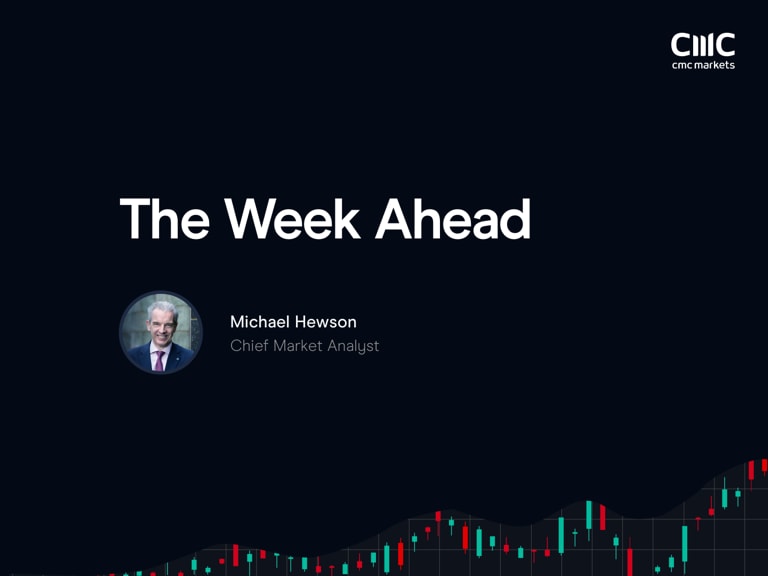The closely watched US jobs report, due out on Friday 8 July, is expected to show that the world’s largest economy added 300,000 non-farm payrolls in June. Beyond that headline figure, attention is likely to focus on the extent to which inflation and rising interest rates are affecting hiring patterns. Before that, the Reserve Bank of Australia meets on Tuesday and is likely to raise the country’s official cash rate again.
Although it’s a fairly quiet week for corporate earnings announcements, FTSE 100-listed Sainsbury’s and Persimmon release their latest results amid investor concerns over the near-term outlook for retailers and housebuilders.
OUR TOP THREE EVENTS FOR 4-8 JULY:
Tuesday – RBA interest rate decision
The Reserve Bank of Australia caught a number of people on the hop when it raised the official cash rate by 50 basis points to 0.85% in June. The move came after the central bank had raised rates by 25 basis points in May. A week before the latest rate hike, we reported that a half-point rise was on the cards as RBA policymakers had fallen behind the rate-rising curve after counterparts at the Reserve Bank of New Zealand lifted their cash rate to 2% in May.
Further rate hikes are imminent, with Reserve Bank governor Philip Lowe saying that the cash rate will get to 2.5% at some point. This target could shift if the US Federal Reserve presses ahead with aggressive interest rate hikes. With the RBNZ likely to lift rates by another 50 basis points at its July meeting next week, we can probably expect the RBA at least to match that with a half-point increase of its own, bringing its cash rate to 1.35%. There is a possibility that the RBA could go even harder, perhaps opting for a 65-basis-point rise that would push the cash rate to 1.5%.
Tuesday – J Sainsbury Q1 results
Last August the J Sainsbury share price spiked at a three-year high on M&A speculation, but since those rumours came to nothing the shares have plunged by around a third. Even a decent set of full-year numbers in April weren’t enough to restore investor confidence, with the share price falling 25% this year to levels last seen in November 2020.
Investors appear more concerned about the outlook than the supermarket’s recent performance, after management forecast that underlying profit for the current fiscal year would be between £630m and £690m, below analyst expectations for £703m. Last year Sainsbury’s reported a pre-tax profit of £854m on record revenue of £29.9bn, though sales fell from the previous year’s elevated level. Digital sales were down 11%, but up 80% on a two-year basis, while ordinary retail sales declined 2.6% on a year-on-year basis, but increased 4.6% on a two-year basis.
Although profits are expected to fall this year, they are still on track to beat the last pre-pandemic annual profit of £586m, even though costs have risen considerably since then. That said, the outlook for retailers is clearly challenging. Sainsbury’s is absorbing higher energy and staff costs, as electricity and fuel prices soar and employees receive a 10% pay rise.
When rival Tesco issued its first-quarter trading update on 17 June, bosses reported that UK like-for-like sales were down 1.5%. It therefore seems likely that Sainsbury’s will report a similar decrease, as cheaper chains such as Aldi and Lidl attract cash-strapped consumers. Sainsbury’s Q1 results are also likely to reiterate the uncertain economic outlook, but for many investors this uncertainty is already priced in.
Friday – US non-farm payrolls (June)
The US economy added a better-than-expected 390,000 jobs in May, a slowdown from the upwardly revised April figure of 436,000 jobs, according to the US Bureau of Labor Statistics. Estimates suggest that payroll growth fell to 300,000 in June.
Although the May figure beat estimates, other sources paint a somewhat different picture of the US jobs market. Payroll processing firm ADP announced that private payrolls increased by only 128,000 in May, the weakest uptick since December 2020 and a significant slowdown on the downwardly revised 202,000 private payrolls that were added in April.
With the Federal Reserve raising interest rates to combat inflation, the key takeaway from forthcoming payroll reports will be whether expectations of higher rates are affecting hiring patterns. The US has over 11m job vacancies, but the labour market participation rate remains stuck at 62 3%, while the unemployment rate is 3.6%, just above the 2019 low, although weekly jobless claims have risen in recent weeks. Employers are struggling to fill roles, despite higher pay – wages are up 5.2% versus a year ago – and the rising cost of living. Will higher wages and inflation draw people back to the labour market? When will those 11.2m vacancies be filled? How long before non-farm payrolls post a negative print? These are valid questions given that US interest rates could double before October.
MORE KEY EVENTS (4-8 JULY):
Monday 4 July
No major announcements
Tuesday 5 July
RBA interest rate decision
See top three events, above
Global services PMIs (June)
Although economic growth has weakened across Europe and in the UK, and despite the challenges posed by rising energy prices and supply chain disruptions, recent purchasing managers’ index (PMI) readings have remained in positive territory. That said, with inflation set to continue pushing up costs, the services sector is likely to remain under pressure in the coming months.
Flash PMI numbers for June marked a softening from the numbers we saw in May, all of which were in the low- to mid-50s for Germany, France, Italy and the UK. The latter benefited from positive sentiment around the Jubilee Bank holiday at the start of June.
In China, PMI prints seem set to improve marginally from the levels we saw in May as the economy gets back on its feet after the recent Covid-related lockdowns.
Sainsbury’s Q1 results
See top three events, above
Wednesday 6 July
Fed minutes
The publication of the minutes from the Federal Reserve’s 14-15 June meeting is likely to shed light on policymakers’ pivot to a more aggressive interest rate stance after consumer prices rose 8.6% in the year to May. The June meeting saw the Fed raise its benchmark funds rate by 0.75 percentage points to a range of 1.5% to 1.75%, marking a surprising departure from the Fed’s previously guided plans to raise rates by half a percentage point, as signalled by the Fed before a “blackout” period in the runup to the meeting.
That deviation from guidance did not go down well with some sections of the market. With only one committee member, Esther George of the Kansas City Fed, dissenting against the 75-basis-point rate hike and backing a half-point increase in line with guidance, it will be interesting to learn what was discussed at the meeting that led to a larger-than-expected rate hike.
Thursday 7 July
Persimmon Q2 results
Investor confidence in UK housebuilders has taken a hit of late, despite strong demand for new homes and UK house price growth of around 10% a year, according to Rightmove. Persimmon’s share price has lost around a third of its value so far this year. When the FTSE 100-listed housebuilder reported Q1 forward sales of £2.8bn, it commented that first-half forward sales would be weaker, with a pickup expected in the second half of the year. This appears to have spooked some investors.
Last year Persimmon made record profits per house of around £66,000, and the company was upbeat about the outlook for 2023. However, the warning over H1 and concerns over higher mortgage rates seem to have prompted some anxiety about housebuilders’ ability to meet their margin targets on future sales, even as the average UK selling prices rose to £266,000. Higher interest rates appear to be causing a drop in mortgage approvals – another factor weighing on the sector.
In Q1 Persimmon said that it expects to deliver volume growth of 4-7% for the full year, while maintaining its margins. The company was generally optimistic about supply and demand dynamics in the market. Many investors will be eager to hear if this remains the case.
Currys full-year results
When Currys last updated the market in January, the company said it expected to post pre-tax profits of £155m. This modest downgrade from £160m was attributed to problems in supply chains, which added to its costs. The chip shortage hit availability of some of the electrical retailer’s products, including the PlayStation 5.
Since that January update, shares in the company – which was formed in 2014 by a merger of Dixons and Carphone Warehouse – have slipped to two-year lows, weighed down by the cost-of-living crisis. Sentiment towards the retail sector is at a low ebb, especially as far as white goods and other electricals are concerned, with consumers likely to hold off on purchases of big-ticket items.
Although group sales are higher than they were pre-pandemic, on a year-on-year basis they are in negative territory. Online sales have seen the biggest improvement versus two years ago, rising 29%.
Levi Strauss & Co. Q2 results
Levi’s shares hit an 18-month low in May, despite signs that its profit margins were improving. At the end of last year, profit margins increased to 57.8% as full-year revenues rose 29% to $5.76bn. For the new fiscal year the clothing company said it expected to grow net revenues by 11-13% to around $6.4bn. The Q1 results, released in April, suggested that the business was on track to meet that target, as net revenues rose to $1.6bn.
Q1 earnings saw profits of $0.46 a share, beating expectations of $0.41 a share. The weak economic outlook remains a key challenge, however. Several US retailers, including Macy’s which stocks Levi’s apparel, have recently issued profits warnings. Although sales from Levi’s online store have been growing and now account for at least 39% of overall sales, Q2 profits are expected to halve versus the Q1 figure to $0.23 a share.
Friday 8 July
US non-farm payrolls (June)
See top three events, above
Index dividend schedule
Dividend payments from an index's constituent shares can affect your trading account. View this week's index dividend schedule.
Selected company results
| MONDAY 4 JULY | RESULTS |
| Porvair (UK) | Half-year |
| TUESDAY 5 JULY | RESULTS |
| J Sainsbury (UK) | Q1 |
| WEDNESDAY 6 JULY | RESULTS |
| Argentex Group (UK) | Full-year |
| Redde Northgate (UK) | Full-year |
| Saratoga Investment (US) | Q1 |
| Simulations Plus (US) | Q3 |
| THURSDAY 7 JULY | RESULTS |
| Baltic Classifieds Group (UK) | Full-year |
| Byrna Technologies (US) | Q2 |
| Currys (UK) | Full-year |
| Helen of Troy (US) | Q1 |
| Jet2 (UK) | Full-year |
| John Wood Group (UK) | Half-year |
| Levi Strauss & Co. (US) | Q2 |
| Persimmon (UK) | Q2 |
| Watches of Switzerland Group (UK) | Full-year |
| WD-40 Co. (US) | Q3 |
| FRIDAY 8 JULY | |
| No major announcements |
Company announcements are subject to change. All the events listed above were correct at the time of writing.
Disclaimer: CMC Markets Singapore may provide or make available research analysis or reports prepared or issued by entities within the CMC Markets group of companies, located and regulated under the laws in a foreign jurisdictions, in accordance with regulation 32C of the Financial Advisers Regulations. Where such information is issued or promulgated to a person who is not an accredited investor, expert investor or institutional investor, CMC Markets Singapore accepts legal responsibility for the contents of the analysis or report, to the extent required by law. Recipients of such information who are resident in Singapore may contact CMC Markets Singapore on 1800 559 6000 for any matters arising from or in connection with the information.








